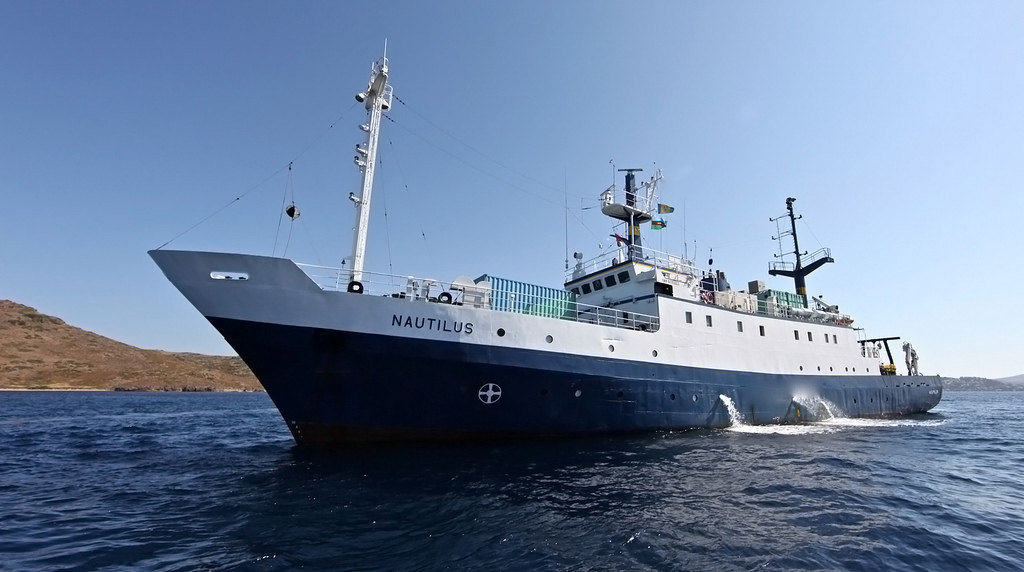June 21, 2013
Watching scientists do research in real time on board a ship operating tens to hundreds of miles off shore is a rare opportunity for the public; but that is exactly what is available right now at www.nautiluslive.org.
Live feeds from the Exploration Vessel (E/V) Nautilus Gulf of Mexico seafloor coral biology expedition began June 20th and will continue for about two weeks. Viewers can observe ship-board activities such as the maneuvering of equipment and instruments at the seafloor, 1000s of meters below the sea surface, and can also submit questions to scientists on duty.
The science party will use the remotely operated vehicle (ROV) Hercules to explore and sample various sites in the Gulf of Mexico. Chief Scientist Erik Cordes (Temple University) leads the research team and they will visit benthic communities in the vicinity of the Macondo well, the location of the 2010 Gulf of Mexico Deepwater Horizon oil spill. Deepwater corals are their primary study target. “This new telepresence technology gives us the ability to share our discoveries with the whole world in real time. I am very excited to be able to use this capability to show everyone the fascinating deep-sea coral communities that we study and the cutting edge research that the GoMRI [Gulf of Mexico Research Initiative] funds,” Cordes says.
This two-week cruise aboard the 64-meter Nautilus, owned by the Ocean Exploration Trust, will conduct research for the Ecological Impacts of Oil and Gas Inputs to the Gulf (ECOGIG) consortium. Unlike most other vessels available for academic research, the E/V Nautilus is equipped with a high-bandwidth satellite system, enabling remote science and education through the Inner Space Center (ISC) at the University of Rhode Island’s Graduate School of Oceanography. From there, the live feeds are shared with Exploration Command Consoles that are located worldwide.
Specific tasks for the cruise include detailed repeat imagery of known locations on the seafloor, collections of live corals for experiments carried out on board the ship, acquisition of sediment push cores, marker deployments, and exploration of unknown areas of the sites. Portions of the cruise will be conducted alongside the Research Vessel (R/V) Endeavor, and logistics and sampling will be closely coordinated between the vessels. This may include the exchange of personnel and samples during the day.
The R/V Endeavor cruise, led by Joseph Montoya (Georgia Tech) and also funded through the ECOGIG consortium, sailed from Gulfport on June 19 on its 5-week mission to examine water column and benthic processes. The coordination of the two cruises will further the mission of ECOGIG “to understand the environmental signatures and impacts of natural seepage versus that of abrupt, large hydrocarbon inputs on coupled benthic-pelagic processes in deepwater ecosystems in the Gulf of Mexico, and to chart the long-term effects and mechanisms of ecosystem recovery from the 2010 Macondo well blowout.” The telepresence available on the E/V Nautilus enhances the educational outreach efforts of both ECOGIG and GOMRI.
The original article can be accessed here.
This research is made possible by a grant from BP/The Gulf of Mexico Research Initiative (GoMRI) through the Ecological Impacts of Oil and Gas Inputs to the Gulf (ECOGIG) consortium. The GoMRI is a 10-year, $500 million independent research program established by an agreement between BP and the Gulf of Mexico Alliance to study the effects of the Deepwater Horizon incident and the potential associated impact of this and similar incidents on the environment and public health.


















 back to top
back to top